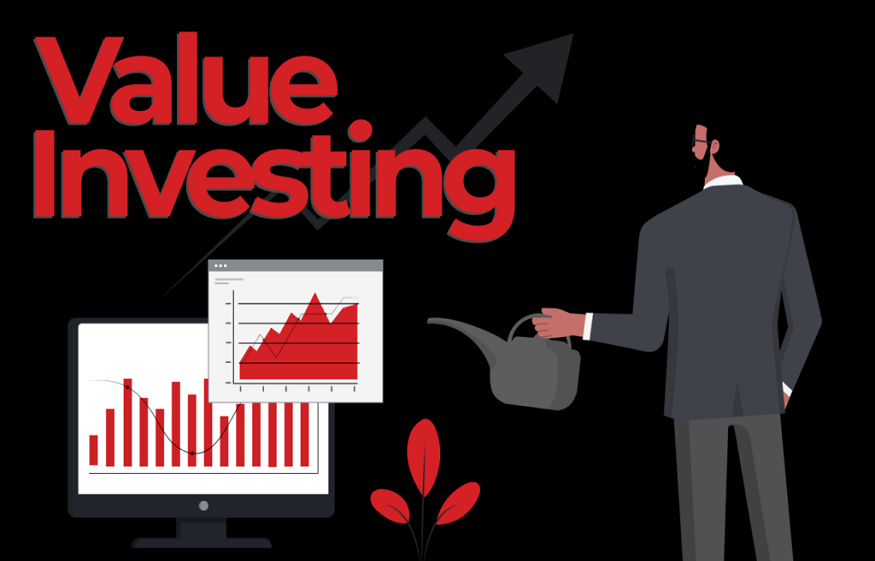Investing often feels like a balancing act between opportunity and risk. With so many strategies to choose from, it can be overwhelming to decide which path offers the best chance of success. Among the many approaches that have stood the test of time, value investing remains one of the most respected and effective. Rooted in patience, discipline, and a keen eye for fundamentals, this strategy has shaped the careers of legendary investors like Warren Buffett and Benjamin Graham.
If you’ve ever wondered how seasoned investors manage to buy companies at bargain prices and watch them grow into long-term winners, understanding the principles of value investing is a critical step. This strategy isn’t about chasing the latest trends or reacting to short-term market noise—it’s about seeing the bigger picture and making informed decisions based on intrinsic worth.
Understanding the Core of Value Investing
At its heart, value investing is the practice of identifying stocks that appear undervalued compared to their intrinsic value. In other words, the goal is to find solid companies trading for less than what they are truly worth. But before diving deeper, it’s worth asking the essential question: what is value investing?
Value investing focuses on fundamental analysis—examining financial statements, revenue growth, earnings reports, debt levels, and overall business models. Instead of being swayed by market hype or temporary downturns, value investors concentrate on whether a company has strong underlying fundamentals that the market has temporarily overlooked. This approach requires patience, as it may take months or years for the broader market to recognise and reward the true worth of an undervalued stock.
The Principle of Intrinsic Value
Intrinsic value is one of the cornerstones of value investing. It refers to the actual worth of a company based on its fundamentals, independent of its current stock price. Determining intrinsic value involves analysing financial metrics such as earnings, dividends, and cash flow, as well as qualitative factors like brand strength, management quality, and competitive advantage.
Value investors typically look for a significant difference between a company’s intrinsic value and its current market price. This margin of safety—paying less than what something is worth—provides a cushion against unforeseen risks and market volatility.
Patience as a Virtue
One of the defining traits of successful value investors is patience. Markets don’t always recognise undervalued stocks right away. It can take time for other investors to catch on, for a company to prove itself, or for broader market conditions to shift in favour of an overlooked business.
During this waiting period, it’s easy to feel discouraged or anxious, especially when other strategies promise quick gains. However, patience allows value investors to reap the rewards of long-term compounding and minimises the emotional decision-making that often leads to poor investment outcomes.
The Role of Contrarian Thinking
Value investing frequently requires going against the crowd. While many investors flock to trendy, high-growth stocks that dominate the headlines, value investors often search in the opposite direction—toward companies that are undervalued, overlooked, or even out of favour.
Contrarian thinking doesn’t mean blindly opposing the market. Instead, it means having the conviction to invest in companies that you believe are strong, even if the majority doesn’t see it yet. This mindset often leads to opportunities that others miss and sets the foundation for above-average returns.
Discipline and Emotional Control
Perhaps one of the most underestimated principles of value investing is emotional discipline. Investing can trigger strong feelings of fear and greed—fear of missing out when prices are soaring, and fear of loss when markets are falling.
Value investors succeed by maintaining a level head and sticking to their analysis. Instead of chasing speculative gains, they rely on carefully considered evaluations and the margin of safety. Emotional control not only prevents impulsive decisions but also reinforces the patience needed for long-term success.
The Long-Term Perspective
Value investing is not a get-rich-quick strategy. It’s a long-term approach that aligns with the natural growth cycle of businesses. By focusing on sustainable earnings, strong management, and competitive advantages, investors are more likely to build wealth steadily over time.
This long-term perspective also means that value investors aren’t easily shaken by market downturns. Instead, they often see bear markets as opportunities to acquire high-quality stocks at discounted prices.
Why Value Investing Still Matters Today
In an era dominated by algorithmic trading, meme stocks, and speculative bubbles, it might seem like traditional strategies such as value investing have lost their relevance. However, the opposite is true.
The principles of value investing are timeless because they are rooted in human behaviour and fundamental business performance. Markets will always fluctuate, trends will come and go, but companies with strong intrinsic value will eventually be recognised. By practising discipline, patience, and thorough analysis, investors can shield themselves from volatility and build portfolios that withstand the test of time.
Conclusion
The principles of value investing remind us that successful investing doesn’t depend on luck or market timing—it depends on understanding businesses, exercising patience, and maintaining discipline. While it may require more research and a willingness to hold onto investments for years, the rewards are often more stable and substantial than chasing quick wins.
For investors looking to grow wealth steadily and sustainably, value investing offers a roadmap grounded in time-tested wisdom. By embracing its core principles, you not only improve your chances of financial success but also cultivate a mindset that helps you navigate markets with clarity and confidence.









